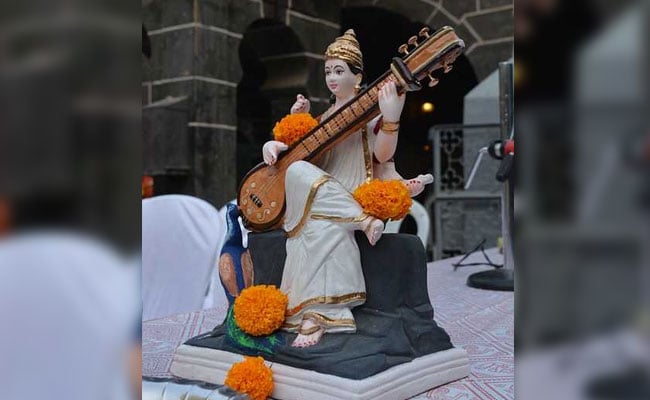Interesting Myths, Beliefs Behind Basant Panchami, The Festival Of Spring

Basant Panchami marks the beginning of spring in the country and this year it will be observed on February 10
NEW DELHI: Basant Panchami marks the beginning of spring in the country and this year it will be observed on February 10.
The day is also dedicated to the goddess of knowledge, arts and music, Saraswati, who is worshipped on this day. Saraswati Puja is more popular in Bengal, Odisha and North Indian states of Uttar Pradesh, Bihar, Rajasthan and Madhya Pradesh. It is believed that on worshipping the goddess, she may bestow similar gifts on her devotees.
Basant Panchami also marks the start of preparation for Holika and Holi, which occurs 40 days later.
Nityananda Misra, a well-known Sanskrit scholar and author of Kumbha: The Traditionally Modern Mela, however, reminds us of a few lesser known facts of Basant Panchami, also celebrated on the fifth day of the bright half of the lunar month.
According to the author, in Sanskrit literature, the onset of spring is associated with nature coming alive: flowers blooming, bumblebees buzzing, and animals mating.
Prose and poetry writers too reserved their best for the spring season. Mr Misra recalls various literary pieces vividly describing the onset of Vasantotsava, like Kalidasa's Ritusamhara (The Collection of Seasons), Banabhatta's prose-poem Kadambari, (The Liquour).
He says that Basant Panchami is also referred to as Shri Panchami in Sanskrit texts and historically, it was Lakshmi (also called Shri) and not Saraswati who was worshipped on this date.

Mr Misra reminds us that Vasanta Panchami is the fourth of the six major (bath) days at the Magh Mela, Ardha Kumbha Mela, and Kumbh Mela in Prayag.
There are quite a few myths associated with the festival.
A popular folklore goes that poet Kalidasa, before attaining knowledge was a simpleton who was tricked into marrying a princess who did not respect him. A dejected Kalidasa tried to commit suicide but the goddess Saraswati who appeared before him stopped him from the act. He emerged from the water an intelligent, knowledgeable and cultured person.
Another story relates to Kamadeva, the god of love who was turned to ashes by Lord Shiva for his misdeeds. His wife Rati went through an arduous 40 days of penance to bring her husband back. On this day Lord Shiva finally relented and brought Kamdeva back to life.

Another historically placed legend is that the observation of the festival started with the arrival of the Aryans. It is believed that the Aryans travelled through Khyber Pass and crossed the Saraswati River to reach India. When they settled in, the Saraswati River became an important source of life for them, so the celebration became a routine.
Muslims too have been celebrating Basant since 12th century AD.
As per legends, after the death of Delhi's Chishti Saint Nizamuddin Aulia's young nephew, the saint withdrew from society.
Court poet Amir Khusrau dressed in yellow took flowers to the Saint to brighten his mood. This brought a smile on the Saint's face. Since then, Basant has been celebrated at Nizamuddin Aulia in Delhi and all dargah's of the Chishti order.


















